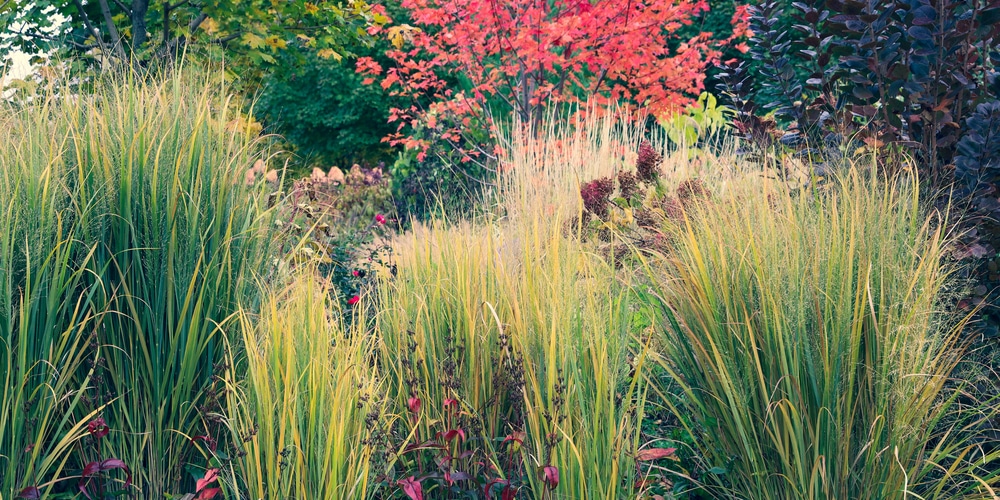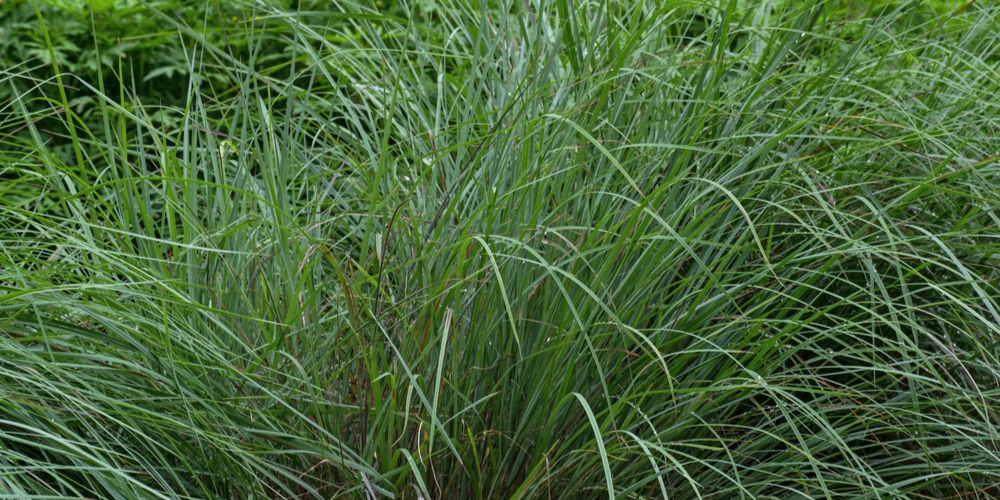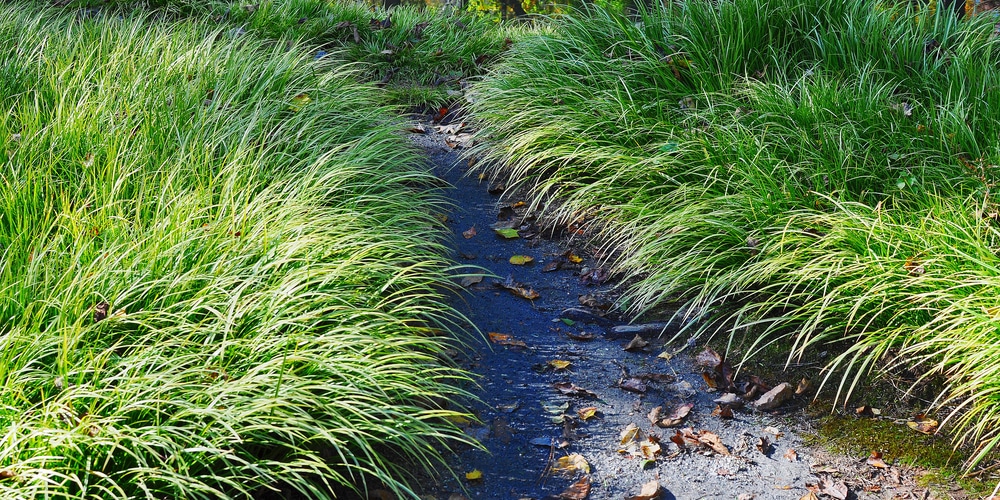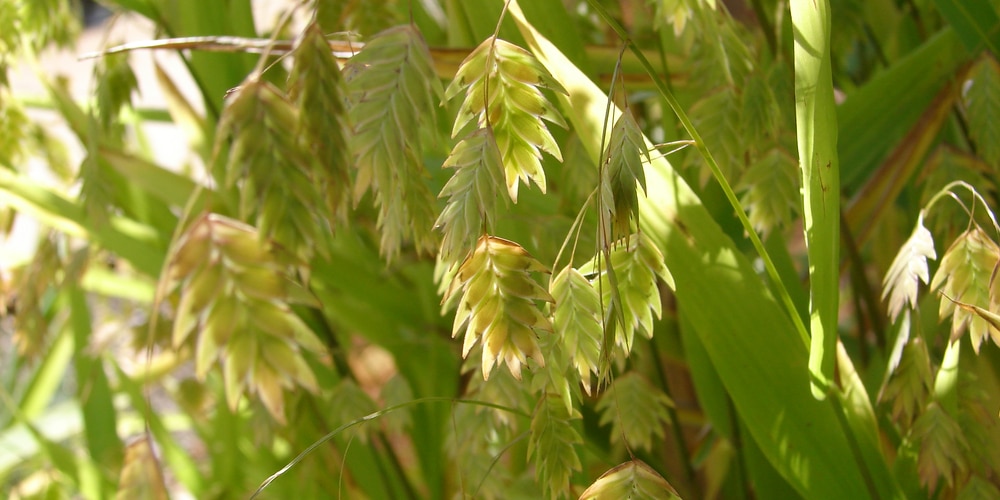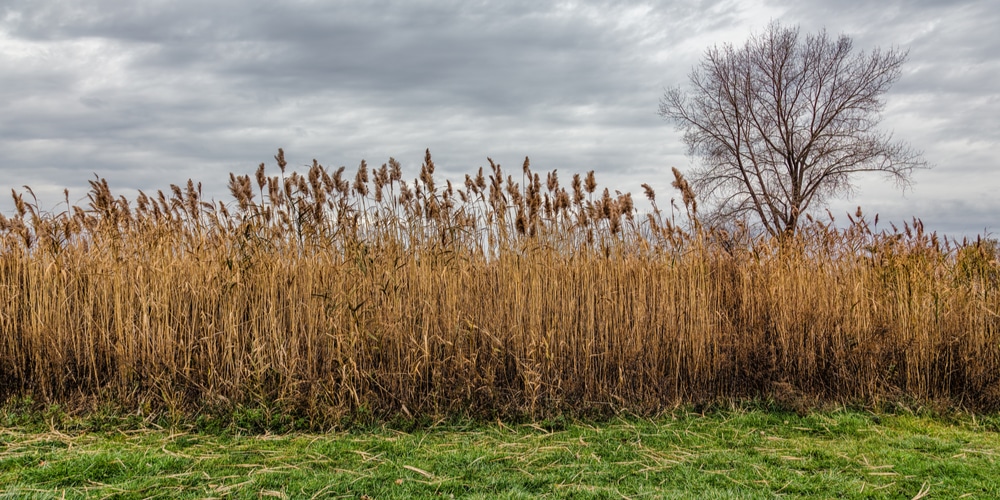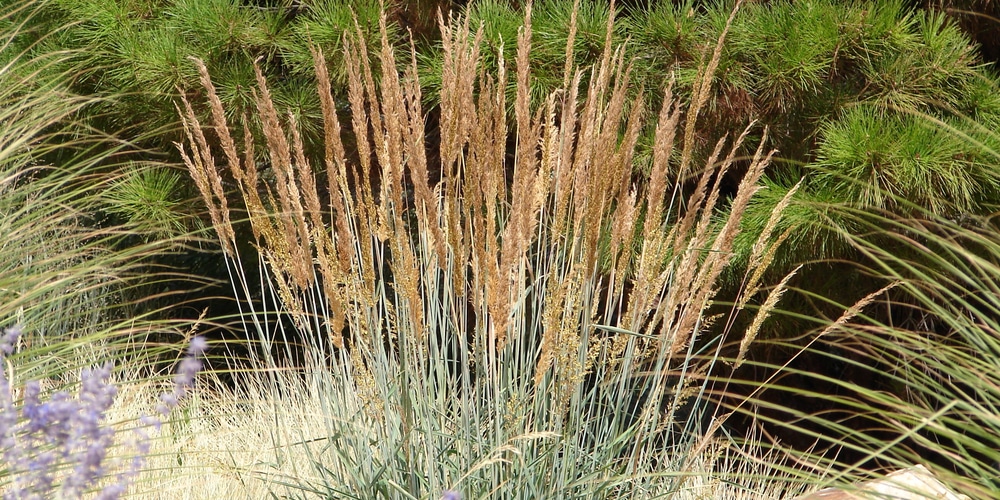Are you wondering what grasses are native to Illinois? You’ve come to the right place. Here are seven of the most Illinois Prarie Grasses. Let’s get straight to it!
Illinois Prarie Grasses
Big Bluestem (Andropogon geradii)
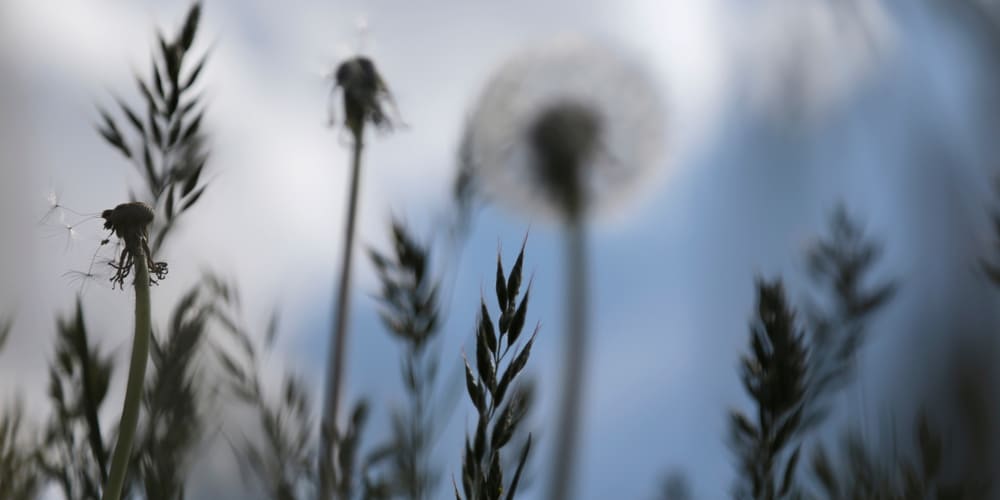
Common Names: Big bluestem, great blue stem, turkey foot grass
Other Common Names: purple top grass, green leaf-turkeyfootgrass, greenleaf-turkeyfoot
Life Cycle: Perennial
Type: Warm season bunchgrass
Growing Habitat: Prairies and Dunes of the Illinois Basin.
Description: Big blue stream is one of the most common Illinois Prarie Grasses. The grass plant has green blades that are 60-100 centimeters or 24 to 39 inches long. It can become up to 125 centimeters or 49 inches high. At the base of the stem, it is purplish in color. The sheaths around the stem can often be red as well. it keep its leaves all year round. The panicle is around 40 centimeters or 16 inches long and it has a flat, open structure.
Big bluestem has a deep root system. It produces rhizomes and stolons at the nodes. Some of its roots can go to depths of 1 ½ metres or 5 feet underground.
Interesting Facts: Big bluestem is a warm season bunchgrass.
Switchgrass (Panicum vigatum)
Common Names: Switchgrass, tall panic grass, tall panicum
Life Cycle: Perennial
Type: Warm season bunchgrass
Growing Habitat: Prairies and Dunes of the Illinois Basin. Some areas in the Western United States.
Description: The panicle is narrow and it can grow up to 1 meter or 3 feet high. The sheaths and leaves are green and the plant itself is purple (turns bright red in autumn). The internodes can be as long as 15 centimeters or 5 inches.
Interesting Facts: Switchgrass has tremendous forage value that helps to improve soil fertility and control erosion.
Switchgrass is a warm season bunchgrass. It has been known to provide good forage for livestock and wildlife. The grass also provides great erosion control of sloping land, making it a valuable part of the restoration plan for dunes in Illinois. Switchgrass is also a common Missouri native grass.
Little Bluestem (Schizachyrium scoparium)
Common Names: Little bluestem, sandhill bluestem, broom sedge
Other Common Names: silky bluestem, turkey foot grass
Life Cycle: Perennial
Type: Warm season bunchgrass
Growing Habitat: Prairies and Dunes of the Illinois Basin. Some areas in the Western United States.
Description: The sheaths around the stem are green and smooth. The panicle is open with ascending branches about 10 centimeters or 4 inches long. The leaves have a whitish, silky texture. It has a decumbent growth pattern where it just lays on the ground and doesn’t shoot up as high as other grasses do.
Interesting Facts: Little bluestem is a warm season bunchgrass. It has been known to provide good forage for livestock and wildlife. The grass also provides great erosion control of sloping land, making it a valuable part of the restoration plan for dunes in Illinois.
Prairie Dropseed (Sporobolus heterolepis)
Common Names: Prairie dropseed, prairie sackgrass, fall witchgrass
Other Common Names: silky dropseed, wild oat grass
Life Cycle: Perennial
Type: Warm season bunchgrass
Growing Habitat: Prairies and Dunes of the Illinois Basin.
Description: The panicle is open and flat, with ascending branches about 20 centimeters or 8 inches long. It has a drooping habit and it can be as high as 30 centimeters or 12 inches. Its leaves are rolled in at their edges and they can grow up to 2 meters or 6 feet long.
Northern sea-oats (Chasmanthium latifolium)
Common Names: northern seaoats, slender-leaved chasmanthium, black oats
Life Cycle: Perennial
Type: Warm season bunchgrass
Growing Habitat: Prairies and Dunes of the Illinois Basin. Some areas in the Western United States.
Description: The panicle has ascending branches of around 20 centimeters or 8 inches long. It can grow up to 50 centimeters or 1 ½ feet high. The leaves are blue-green with rolled margins.
Interesting Facts: Northern sea-oats is a warm-season bunchgrass that has been known to provide good forage for livestock and wildlife.
Prairie Cordgrass (Spartina pectinata)
Common Names: Prairie cordgrass, prairie marsh hay, meadow cordgrass, slough grass
Life Cycle: Perennial
Type: Warm season bunchgrass
Growing Habitat: Prairies and Dunes of the Illinois Basin. Some areas in the Western United States.
Description: The panicle is narrow with ascending branches reaching heights of 25 centimeters or 10 inches high. The leaves are flat and are 4 centimeters or 1 ½ inch wide.
Indian Grass (Sorghastrum nutans)
Common Names: Indian grass, sideoats grama, sacaton, buffalo grass
Life Cycle: Perennial
Type: Warm season bunchgrass
Growing Habitat: Prairies and Dunes of the Illinois Basin. Some areas in the Western United States.
Description: The panicle is open with ascending branches that reach heights of 40 centimeters or 16 inches. It has a smooth, yellow-green sheath and its leaves are rolled in at their margins.
More Planting in Illinois:
